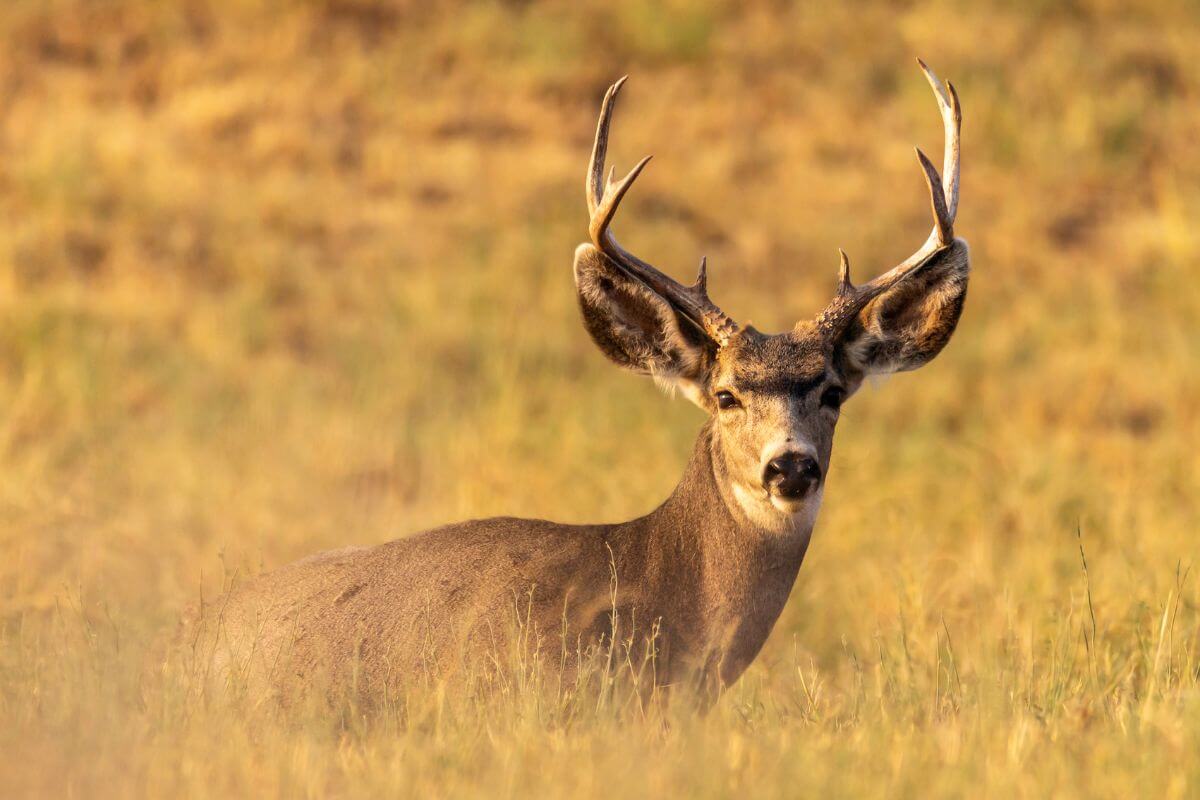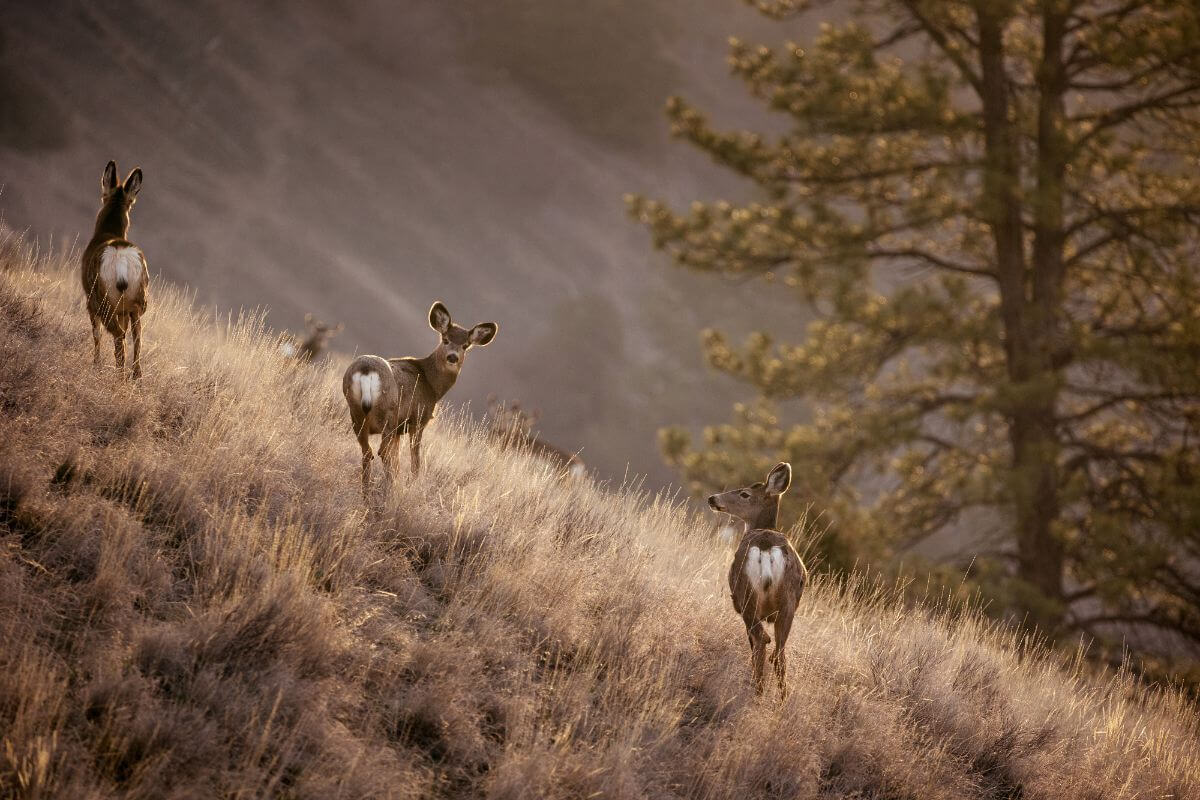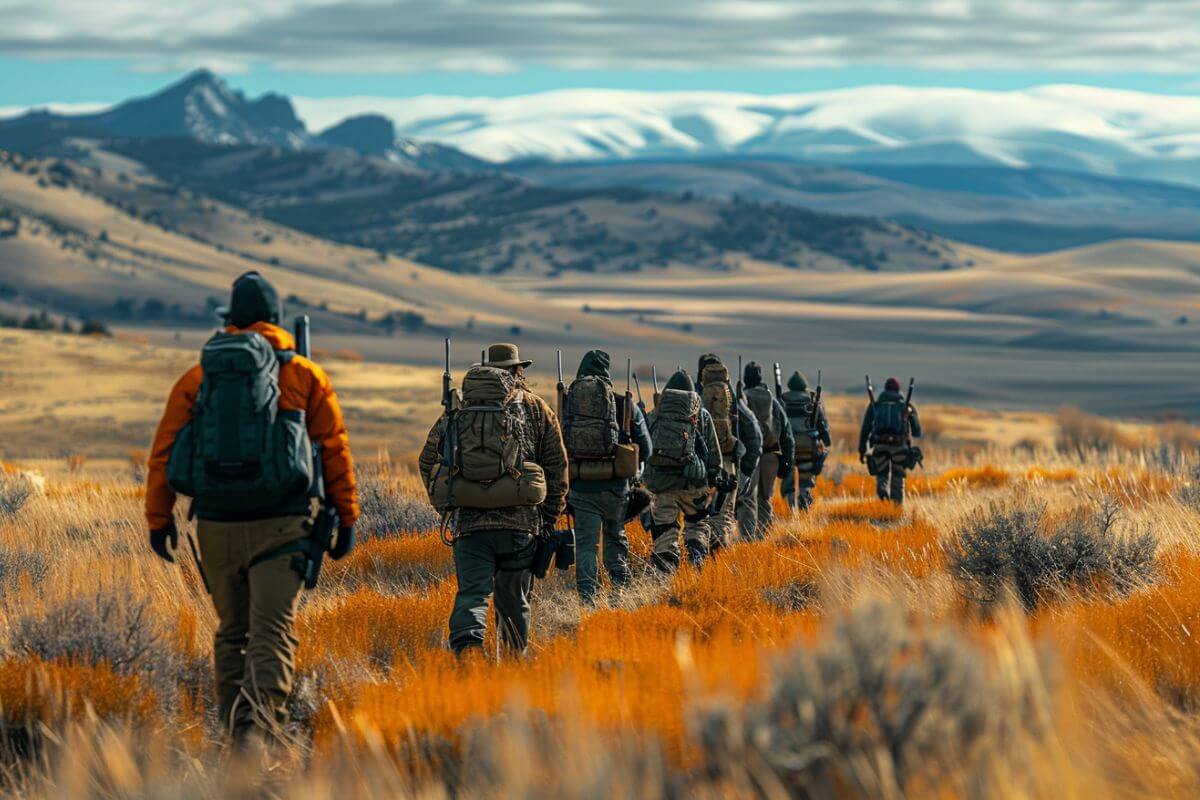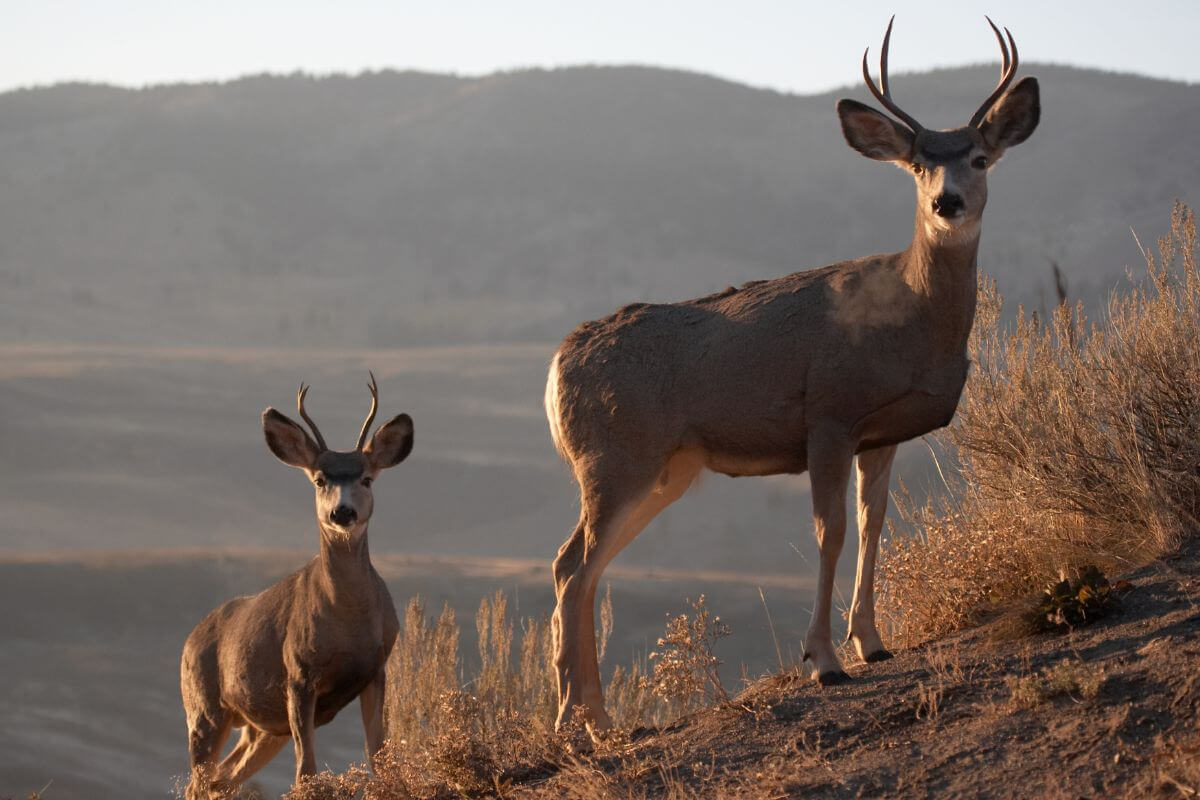Have you ever dreamt of standing on Montana’s vast public lands, with a mule deer prize in your sights? As the heartland of western hunting, Montana offers an immersive, challenging, and rewarding big-game experience.
From its sweeping, untamed landscapes to a robust culture steeped in the hunting economy, there’s more than just a big deer tag up for grabs here. With a careful eye on conservation and a real focus on hunter opportunity, over half of the state’s deer units welcome hunters yearly.
But how exactly do you score a Montana mule deer tag, making your dream hunt a reality? In this article, we’ll delve into the different deer tags for Montanans and out-of-state hunters, and arm you with expert strategies tailored to the state’s unique public hunting experience.
- Related article: Deer Hunting Spots in Montana
So, gear up, and let’s explore what Montana’s wilderness has for you. Whether it’s for your first or your 50th hunt, the secrets of scoring that coveted mule deer tag in Montana might surprise you.
7 Key Takeaways on Montana Mule Deer Tags
- Mule deer hunting in Montana is a diverse and sought-after experience, with tags available through a lottery system.
- Types of tags include General Deer Licenses, Deer B Tags, and various combinations for residents and nonresidents.
- The application process for nonresident hunters is managed and requires punctual submissions, often with early deadlines in April or June.
- To increase the chances of scoring a tag, hunters can use bonus points, get outfitter advantages, and time their applications strategically.
- It’s essential to consider season dates, as late-season hunts during the rut can impact the herd’s balance.
- Public land, covering approximately 70% of Montana, offers ample opportunities for quality deer hunting.
- Planning, knowledge of the system, and understanding mule deer behavior can enhance the hunting experience in Montana.
About Montana Mule Deer Tags

If you’ve got hunting fever and your sights set on Montana’s mule deer, you’re in for a real experience. The state offers some of the most diverse and sought-after hunting grounds in the U.S., but mule deer tags are in high demand, so a clear plan is advisable.
Types of Montana Mule Deer Tags

In the vast and untamed world of Montana’s Mule Deer hunting, each tag represents not just a license, but a key to unlocking the rugged beauty and thrilling challenges of the Big Sky Country.
Here are the different types of deer tags you can explore in Montana:
- General Deer License – Each hunter is allowed to possess one general deer license. Residents can purchase it directly, while nonresidents must participate in a lottery drawing.
- Deer B Drawing – The B License is a deer license valid for a specific period and area. It requires full payment, including a $5 nonrefundable application fee.
- Deer B Over the Counter – An antlerless deer license called the B License is available for a specific period and in a designated hunting district or group of districts.
- Deer B Antlerless Whitetail, Single Region – Hunters should specify their designated region when purchasing as only antlerless white-tailed deer are allowed to be hunted in some areas.
- Deer Permits – Permit extends deer hunting in districts but not extra kill. Nonresidents need a Deer/Big Game license for a General Deer license. Residents need a General Deer license to apply.
Additional Deer Hunting Licenses for Montana Nonresidents:
- Deer Combination General – Non-residents can only apply for one combination license per year, which includes a General Deer license and allows for hunting and fishing of upland game birds (excluding turkey).
- Deer Combination Landowner Sponsored – Nonresidents can apply for one combination license per year that allows hunting and fishing of upland game birds, except turkey. The license includes a General Deer license and landowner certificates provided by the landowner sponsor.
- Nonresident Montana Native Big Game & Deer Combination License – For someone who was born in Montana and has a family member living in the state, but may need to fulfill extra requirements.
- Come Home to Hunt Big Game Combination – Montana residency or hunter education certificate is required for hunting. The license includes Deer & Elk, Upland Game Bird, and Fishing licenses. Montana resident family member sponsorship is needed.
- Come Home to Hunt Deer Combination – Montana residency or hunter education certificate is required for qualification. License includes General Deer, Upland Game Bird, and Fishing privileges, and requires a sponsor from a Montana resident family member.
- Nonresident Student Hunting License – Montana allows nonresident college students enrolled in 12 or more credits to hunt deer, elk, and upland game birds, and get the AIS Prevention Pass and Base Hunting License.
Each of these tags has its own set of rules, requirements, and limitations, so it’s important to assess your needs and choose the tag that best aligns with your hunting plans.
If you’re a resident, you have more direct access to certain licenses, while nonresidents may need to explore specific lottery drawings or landowner sponsorships.
Application Process for Montana Mule Deer Tags
So you’ve set your sights on bagging that prized Mule Deer buck. Well, first things first – you’ll need to apply for a deer license. You can conveniently do this on the Montana Fish, Wildlife & Parks website.
Now here’s the kicker: no over-the-counter tags for nonresidents. Every hunting license, be it General or Special, is issued through a managed application process.
Here’s a quick rundown of the different deer licenses in Montana, their availability, and application deadlines:
| Deer Hunting License | Availability | Deadline |
| General License | OTC | N/A |
| Deer B Licenses | OTC & Special Drawing | June 1 |
| Deer Permits | Special Drawing | April 1 |
| Deer Combination — General | Special Drawing | April 1 |
| Deer Combination — Landowner Sponsored | Special Drawing | April 1 |
| Nonresident Montana Native Big Game Combination License | OTC | N/A |
| Nonresident Montana Native Deer Combination License | OTC | N/A |
| Come Home to Hunt — Big Game Combination | Special Drawing | April 1 |
| Come Home to Hunt — Deer Combination | Special Drawing | April 1 |
| Nonresident Student Hunting License — Big Game Combination | OTC | N/A |
| Nonresident Student Hunting License — Deer Combination | OTC | N/A |
Getting your application in on time is pivotal if you want to be in the running for one of these highly sought-after tags. Application deadlines vary based on the type of tag you’re applying for, and they are usually early in the year, often in April or June 1 for certain licenses.
Remember that all the application dates are set in stone and missing them would mean waiting another cycle for a chance to get that tag, which is often the case for General Licenses. So, no pressure or anything, but planning and punctuality are your best friends here.
Tips for Scoring Montana Mule Deer Tags

If you’re looking to hunt mule deer in Montana, you need more than just luck on your side. To increase your chances of landing that coveted tag, consider these key strategies:
- Take Advantage of Bonus and Preference Points – Bonus points, useful for drawing limited entry permits, and preference points (ideal for a combination license) are excellent weapons in your tagging arsenal.
- The Outfitter Advantage – Hunting with an outfitter can land you an extra preference point, effectively doubling your odds in the same year. But remember, it’s a strategy that costs a bit more.
- Get Inquiry Smart – Do some homework and ask the right questions. Dive into the best time windows to apply for hunts that are easier to score, perhaps avoiding those with heavyweight preference point requirements.
- Master Late-Season Tactics – It’s also important to be aware of late-season tags and their impact. While they seem attractive given Montana’s expansive season, prolonged hunting, especially during the rut, can lead to a decline in the number of mature bucks available for future hunts.
Here are some hunting season dates to keep in mind:
- Archery Season – September 2 to October 15
- Rifle Seasons – October 21 to November 26
- Muzzleloader Season – December 9 to 17
The rifle season aligns with the mule deer’s rut, giving you a better shot at a bigger catch – quite literally. However, it’s a double-edged sword. Each year, hunters take down mature bucks during the rut, affecting the balance of the herd.
Last but not least, don’t underestimate the power of public land for mule deer hunting in Montana. With approximately 70% of the state’s land open to the public, you have vast areas to explore and increase your chances of a successful hunt.
Montana Mule Deer Tags Final Thoughts

Mule deer hunting in Montana holds a special allure for hunters, offering a diverse landscape and enviable prospects. Whether you’re a resident or nonresident angling for a prized shot, success pivots on strategic tag acquisition and responsible hunting.
From navigating the application process to leveraging bonus points and tapping into public land, Montana’s mule deer hunting is as much about planning as it is about the thrill of the chase.
Montana’s managed lottery system and early tag application deadlines demand the right mix of diligence, foresight, and a dash of luck. Chasing your mule deer dreams in the Big Sky Country isn’t just an expedition; it’s an experience in understanding wildlife management and respecting the natural rhythms of the wilderness.
So as you prepare for your mule deer adventure, remember to tread lightly, bag your tag responsibly, and savor every moment of your Montana hunting escapade. With expert tips and a pinch of Montana magic, you’re all set to create unforgettable tales on these storied hunting grounds.
Montana Mule Deer Tags FAQs
1. Can You Buy Over-the-Counter Mule Deer Tags in Montana?
Residents of Montana can purchase over-the-counter (OTC) mule deer tags, providing them with more immediate access to hunting opportunities compared to non-residents who generally need to participate in the controlled draw or lottery system.
2. How Much Is a Non-Resident Deer Tag in Montana?
Non-resident deer tags in Montana can vary based on factors such as the type of deer. Generally, the cost can range from approximately $300 to $600 or more.
3. How Much Is a Mule Deer Hunt in Montana?
The cost of a mule deer hunt in Montana can vary widely depending on several factors, including the outfitter, the type of hunt (guided or unguided), the duration, and the amenities provided.
Guided mule deer hunts with reputable outfitters may range from a few thousand dollars to several thousand dollars, encompassing lodging, meals, and guide services.
4. What Is the Best Mule Deer Zone in Montana?
Determining the best mule deer zone in Montana is subjective, but regions like 7 (Southeastern Montana) and 4 (Central Montana) are often favored for their landscapes and mule deer populations.
5. Can Non-Residents Buy Over-the-Counter Tags in Montana?
Montana does not generally offer over-the-counter (OTC) mule deer tags for non-residents. Non-resident hunters typically need to apply for tags through a controlled draw or lottery system.
Discover additional articles about Montana below:

